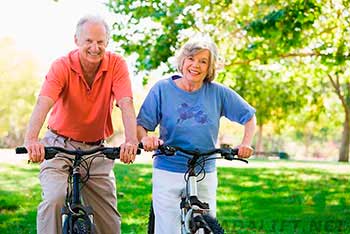Healthy aging is a hot trend these days. The main key to staying fit after 50 is leading a healthy lifestyle, no matter if you’re concerned about chronic diseases, sex drive, or weight gain. For example, practicing a portion control, eating different nutritious meals, and including physical activities into your daily routine can help you promote healthy aging.
Key Secrets to Healthy Aging and Staying Fit
Coping with changes is hard regardless of your age. The main challenge for people after 50 is a number of transitions and changes that start happening, especially their declining health. The good news is that you have an effective formula for staying healthy and fit as you age:
- Find new things to enjoy;
- Stay socially and physically active;
- Be adventurous;
- Keep eating healthy;
- Do regular exercises;
- Stay positive and connected to your beloved ones.
Be Adventurous
Staying healthy and fit after 50 doesn’t have to be boring. There are many options that you can use to make your life a great adventure. Staying in a good shape can reflect a spirit of adventure. For instance, think about traveling or practicing yoga.
Try New Things

Think about new things that you will love to do, such as running with your good friend or starting a new sport. Stay excited and energized by integrating new things into your daily activities to be fit and healthy after 50. Exercise on a regular basis to improve your shape and immune system.
Keep Eating Healthy
Regular exercises should be complemented by a nutritional and healthy diet plan. Add different healthy supplements to your daily routine and eat nutritional food products to feel great. Taking essential vitamins and well-balanced eating are important for people after 50.
Stay Social
As people age, they start feeling less energetic. Many of them prefer to stay home instead of spending time with their friends. However, it’s advisable to stay socially active to be fit when you’re over 50. Based on scientific studies, older adults with a high level of engagements tend to develop physical and cognitive limitations slowly. Look for suitable occasions to meet your friends and enjoy such outdoor activities as biking, hiking, and walking.

